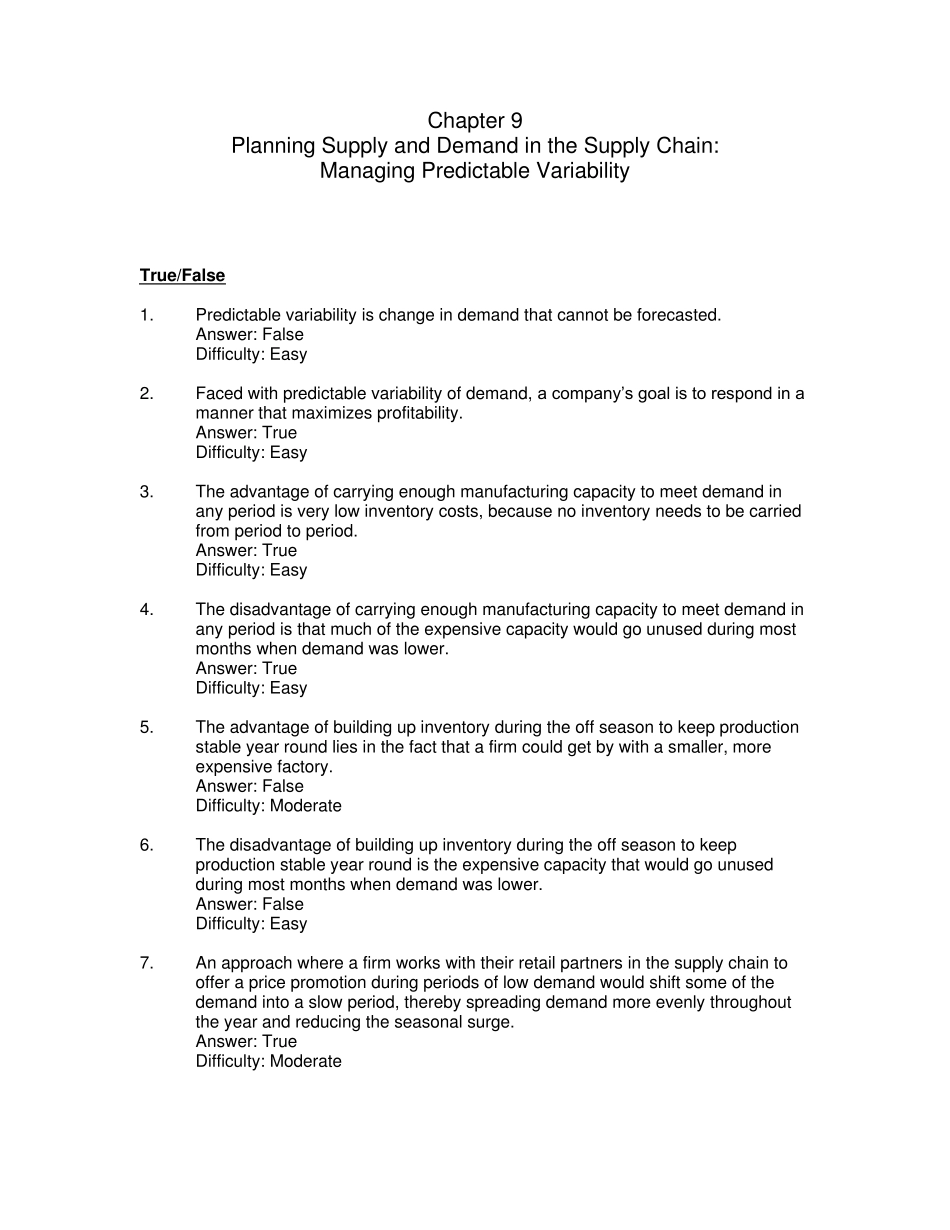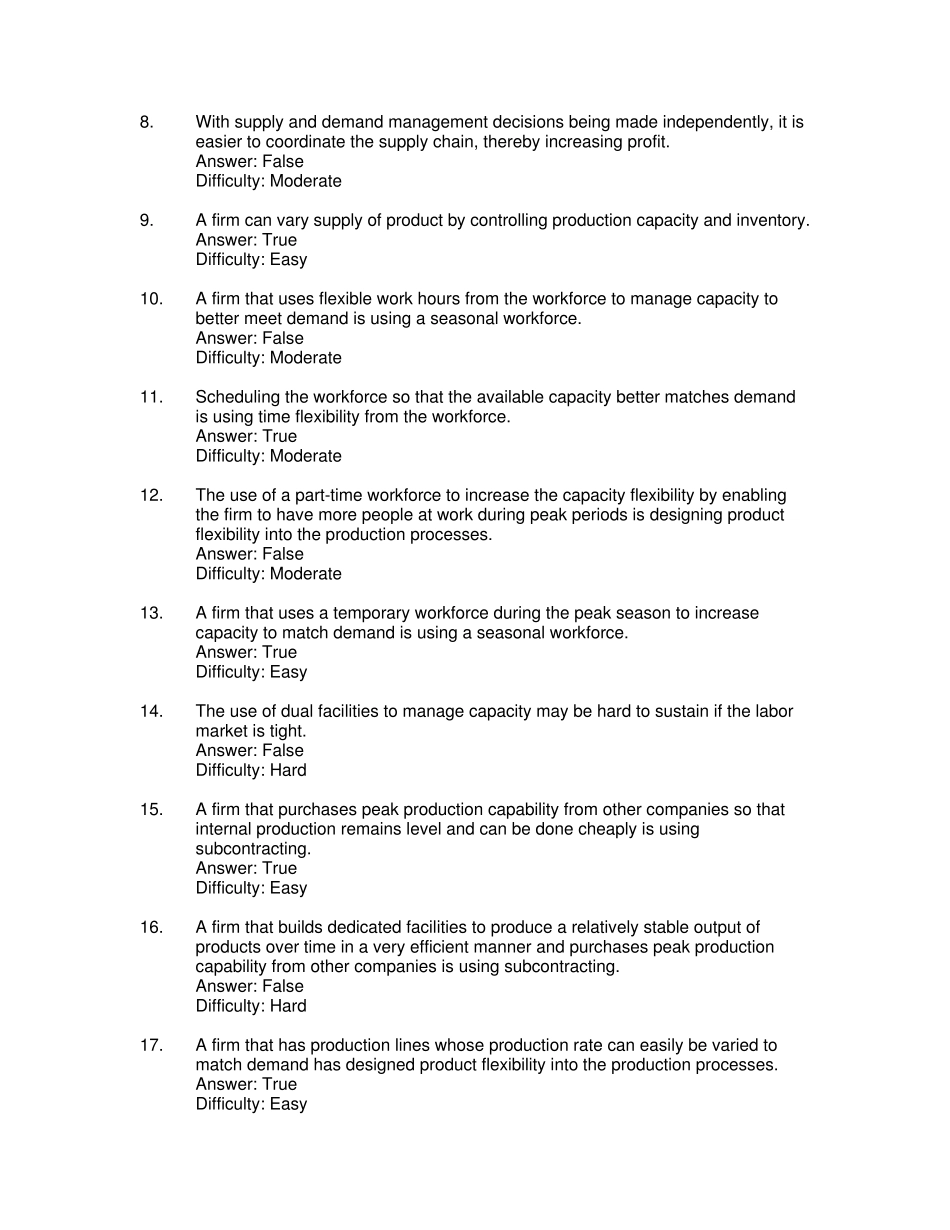Chapter 9 Planning Supply and Demand in the Supply Chain: Managing Predictable Variability True/False 1. Predictable variability is change in demand that cannot be forecasted. Answer: False Difficulty: Easy 2. Faced with predictable variability of demand, a company’s goal is to respond in a manner that maximizes profitability. Answer: True Difficulty: Easy 3. The advantage of carrying enough manufacturing capacity to meet demand in any period is very low inventory costs, because no inventory needs to be carried from period to period. Answer: True Difficulty: Easy 4. The disadvantage of carrying enough manufacturing capacity to meet demand in any period is that much of the expensive capacity would go unused during most months when demand was lower. Answer: True Difficulty: Easy 5. The advantage of building up inventory during the off season to keep production stable year round lies in the fact that a firm could get by with a smaller, more expensive factory. Answer: False Difficulty: Moderate 6. The disadvantage of building up inventory during the off season to keep production stable year round is the expensive capacity that would go unused during most months when demand was lower. Answer: False Difficulty: Easy 7. An approach where a firm works with their retail partners in the supply chain to offer a price promotion during periods of low demand would shift some of the demand into a slow period, thereby spreading demand more evenly throughout the year and reducing the seasonal surge. Answer: True Difficulty: Moderate 8. With supply and demand management decisions being made independently, it is easier to coordinate the supply chain, thereby increasing profit. Answer: False Difficulty: Moderate 9....


